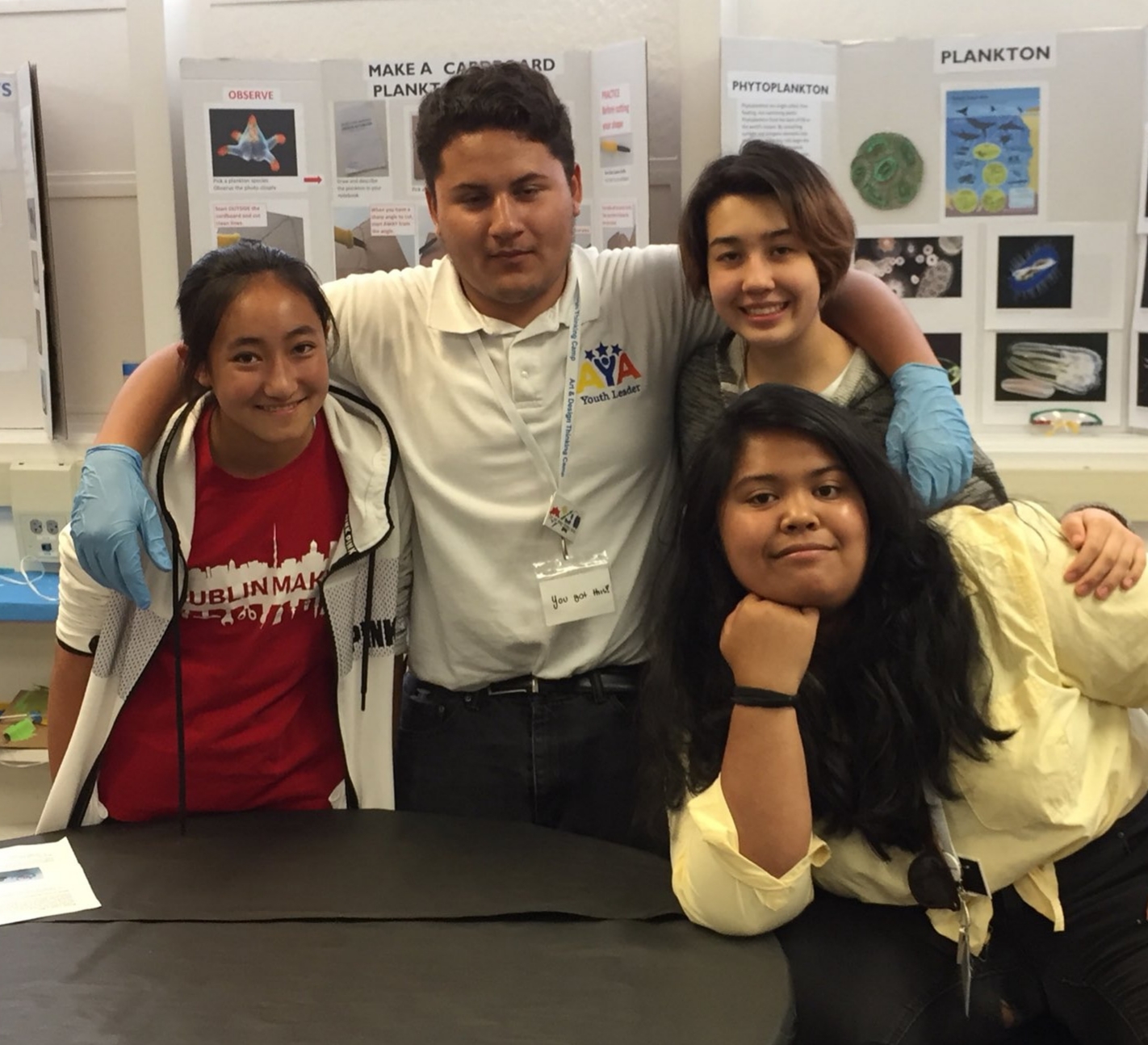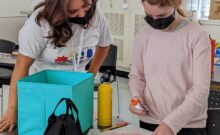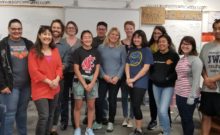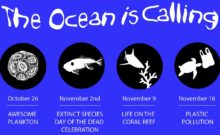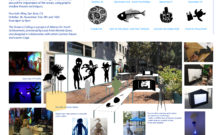Four of our Youth Leaders were instructors for a day during the Art & Design Thinking Camp’s Peer Projects week. Working with the Program Coordinator, they each created a lesson plan for their project, trained Camp Assistants on how to complete it, introduced the lesson to the campers, and supported continued exploration during Tinker Time. This was a great opportunity for each of them to share and teach a project of their own creation. We are excited to be able to offer this kind of experience for our youth and look forward to expanding the program in the future. To view photos from their week visit: http://artanddesigncamp.weebly.com/camp-week-2-2018.html
Here is a little more about the Leaders, their projects, and a reflection on their experience.
Emily Takara
Emily is a rising freshman at Pinewood School. She likes to draw, run, and create 3D print designs. Emily has volunteered at Makerfaire, Mini Makerfaire booths, and at community pop-up maker events for the past four years. She has been a finalist and two time national winner of the NASA sponsored Future Engineer Design Challenge in the Junior strand, and this year she was a national finalist in the teen category. She has attended the Art & Design Camp since it started in 2013 and is excited to have the opportunity to lead workshops as an older teen. Emily’s lesson was Hydrolic Engineering where campers explored making moving parts using pneumatics, which is the use of gas or pressurized air in mechanics. For Cone Pop Outs campers used syringes, plastic tubing and paper to create a moving scene.
Reflection
It was great to have the opportunity to explore creating a lesson plan and teaching about my own interests to other youth. This was really unique because it required me to be responsible for a whole class. It is great, as a high schooler, to learn the skills of teaching and creating a lesson plan by myself. I had to think about the time limit and engaging the students, but also about the specific steps they would go through in the projects. Alba helped me develop my ideas by getting me to understand what the students’ work flow would be like. I was surprised how well the campers responded to what I asked them to do and to the advice I gave them. They were very creative and I learned better ways to do the projects from what they did. Overall, I think that it went really well and it was neat to be the one teaching. I would love to do it again now that I know what to expect. I learned so much from the campers and the experience.
Leonard Morales
Leonard Morales is a former camper in the Art and Design Thinking Camp program. During his five years of experience in the camp he had an interest during his first year with pipe cleaners and building/ creating creatures and such (check out his Wire Dinosaur on the Week 4 page and Pirate Ship on the week 5 page). Leonard also has experience with all types of circuits, including sewing circuitry. Leonard’s lesson was Character Design where campers began by sketching characters on paper and then chose one or two to create with pipe cleaners. Campers complete their final designs using wire armature
Joon Luther
Joon is a high school student passionate about art, coding, and robotics. She herself attended Art & Design Thinking Camp in past years where she was free to play and explore. She is proud to come back as a guest artist teaching what she loves! In her free time, she likes to play the piano, work on her games, and practice the guitar. Joon’s lesson was Game Design where campers worked in small teams to design a simple game in Javascript. They used pixel art to draw a character, background, and other objects in the game and learned basic programming to add functionality.
Reflection
My game design project is based on a few projects I was working on earlier this year. When I heard about the opportunity to teach at the Art and Design Thinking Camp, I knew I wanted to teach game design, because it is something I find fun and interesting. Because this project has a very long timeline, I thought of ways I could condense this project to fit the time constraints. I decided the best way was to make templates for every aspect of the game. I made a template code, a template character, and template background and decorations. This way, the students would not have to rewrite the whole code and they would have more time to work on the artistic elements of the game.
Alba (Program Coordinator) was very helpful when I pitched my presentation to her. She advised me to add more images to the slideshow to give the students more ideas and to do a demonstration on the projector of the tasks they would have to do.
My project involved very few materials, so it was relatively easy to set up. I gave my inspirational/instructional slideshow at the beginning of the class to engage the students and give them some ideas. I probably should have gone into more detail about the project and what specific steps they would have to take. They quickly got annoyed with how long the character design process was taking. Even though I showed them that there was a template character that they could easily edit, most of them opted to make their characters from scratch and re-create the entire walk cycle. A few of them were working productively and finished their characters shortly after lunch. I showed them how to add the character to the game and they understood completely. Unfortunately, there were a few students who weren’t working steadily and were complaining about how long the project was taking, but in the end, they were still able to show off what they had. I was happy to see that some of the students were so thoughtful with their games, drawing inspiration from their favorite games or places.
Overall, I had a very good experience being a youth leader and guest presenter at the Art and Design Thinking Camp. My lesson could have been easier for the students, but now I have an insight into how this project can be improved. If there is another opportunity to teach next year, I will definitely take it.
Eunice Almira
Eunice was a camper in eighth grade and enjoyed it so much that she came back during ninth grade as a student volunteer and Youth Leader. While everyone else was busy during tinker time, Eunice was messing around with the fabric left over from the day’s project. She made her first flower that lit up and the rest is history. Eunice led a Sewing Circuitry lesson where campers learned the basics of sewing, as well as a review of circuitry, to create a simple circuit with a switch on fabric. Campers applied their knowledge of sewing circuitry to create a Light Up Badge.
Reflection
I feel incredibly grateful for the opportunity to teach. It was something that I had never done and therefore had no experience. My preparation for the lesson left me feeling very anxious because I was worried that I would not be clear enough and the campers would not comprehend my lesson. The fear that they would just get bored also stressed me out. Again, this experience was new to me and I had no idea what would work and what would not.
Working with Alba (Program Coordinator) was assuring. She was someone who had more experience and could help guide me throughout the creation of my lesson plan. When it came to the actual teaching, Alba was there to help clarify my instructions and supervise the kids.
The campers were a little predictable in what they would and would not enjoy doing. Something I did overestimate was their ability to focus on a project, which led to them finishing the warm-up project at around tinker time. The campers also seemed to have little motivation at times to work which was frustrating.
I do not believe that my class was the best it could be. Campers were generally uninterested, my warm-up was somewhat tedious and boring, and I don’t think the project allowed for enough creativity to get the campers engaged in the activity. Now, with experience teaching and even more experience with the campers, I believe that I could create a much more refined and engaging lesson plan. I would love to teach at the camp again.


